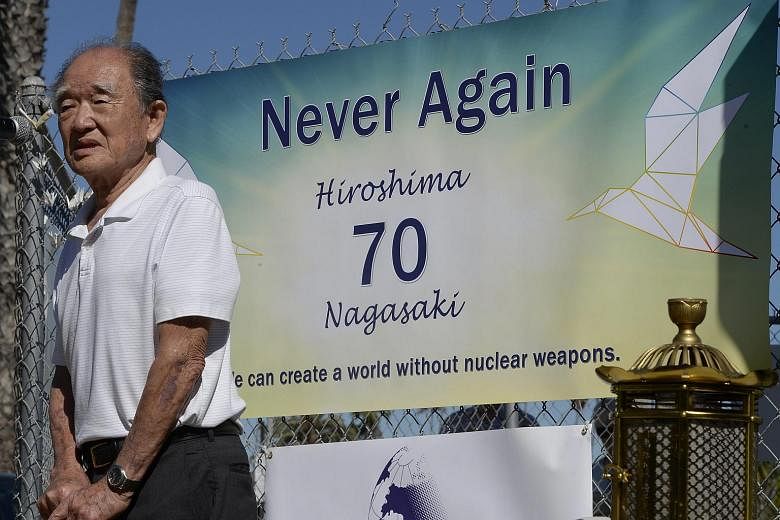In its editorial on August 07, 2015, The Yomiuri Shimbun urges world leaders to visit Hiroshima in person for the sake of peace.
Thursday marks the passage of 70 years since an atomic bomb was dropped on Hiroshima. On Sunday, Nagasaki will also mark the 70th anniversary of becoming a victim of an atomic bomb during the war.
Many years have passed since the day when a nuclear weapon was used for the first time in human history. The average age of atomic bomb survivors is now above 80.
About 70 per cent of Japanese people do not know the dates when atomic bombs were dropped on Hiroshima and Nagasaki. This finding came through a public poll taken by NHK. The importance of handing down the memory of the atomic bombings from generation to generation has grown greater than ever.
Rose Gottemoeller, US undersecretary of state for arms control and international security, will attend this year's peace memorial ceremonies in Hiroshima and Nagasaki - the first time for a senior US government official to be sent from Washington to attend an annual ceremony.
In a peace declaration to be announced at the peace ceremony, Hiroshima Mayor Kazumi Matsui will call on US President Barack Obama and other leaders from across the world to visit the sites of the atomic bombings.
Next spring, a summit meeting of the Group of Seven major nations (the Ise-Shima summit) will be held in Japan, and Hiroshima is slated to host a related meeting of foreign ministers. It will be a good occasion for them to encounter the reality of a place where an atomic bomb was dropped.
Presently, an atomic bomb exhibition, sponsored by the cities of Hiroshima and Nagasaki and other entities, is being held in Washington, the first such exhibition there in 20 years.
Included on display are a watch whose hands stopped at the time when the atomic bomb was dropped on the city, and the Hiroshima Panels, joint works by the artists Iri Maruki, a Hiroshima native, and his wife Toshi Maruki.
When a similar exhibition was held in the United States 20 years ago, there was controversy over what was to be displayed.
The organisers planned to display some mementos of the atomic bomb victims, together with Enola Gay, the plane that dropped the first atomic bomb. But war veterans and others in the United States strongly opposed the proposed exhibit, calling it "an insult" to all US soldiers.
The proposed plan fell through, and the mementos were put on display at another event.
In the United States, there is a deep-rooted historical perspective that the atomic bombing brought the war to a quick end, thus saving the lives of many American soldiers.
In recent years, however, changes in that perception appear to be occurring.
The US government plans to turn facilities related to the Manhattan Project - a programme that led to the development of atomic weapons in the United States - into a national historical park.
Emerging as part of the establishment of the park is a proposal to put some materials related to the atomic bombings of Hiroshima and Nagasaki on display within the park.
The idea came as the US government has taken into consideration the wishes of the two cities for the park to convey correctly the realities of the damage wrought by the bombings.
There are still more than 15,000 nuclear warheads in the world.
President Vladimir Putin of Russia, which annexed the Crimean Peninsula of Ukraine last year, said later that Russia was ready to put its nuclear forces on alert over the crisis there.
China is building up its nuclear capability.
During the process of working to compile final documents of agreement at the Review Conference of the Parties to the Treaty on the Non-Proliferation of Nuclear Weapons in May, China had some of the original wording deleted from the draft.
The wording, based on a Japanese request, called on leaders and young people of the world to visit Hiroshima and Nagasaki.
China criticised Japan, saying it was trying to depict itself as a victim. But issues related to historical perceptions should not be linked with nuclear disarmament.
Teaching the world about the misery wrought by nuclear weapons, and linking the appeal to nuclear disarmament and nuclear nonproliferation. This is a mission Japan, the sole country where atomic bombs were dropped, is obliged to assume.
------------------------------------------------------------------------------------------------------------------------
Editorial Notes reproduces an editorial from one of the member-papers of The Straits Times media partner Asia News Network, a grouping of 22 newspapers.

